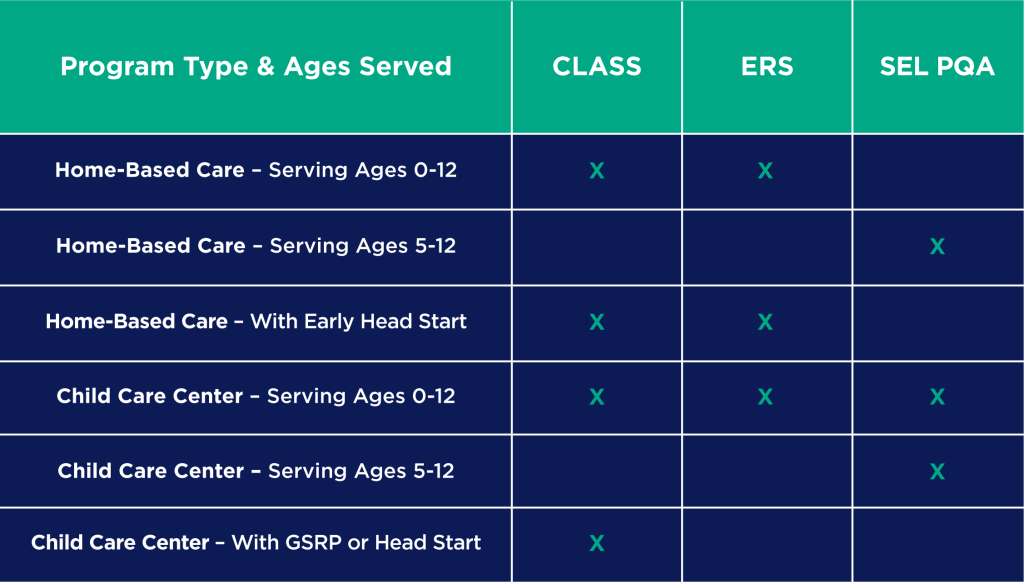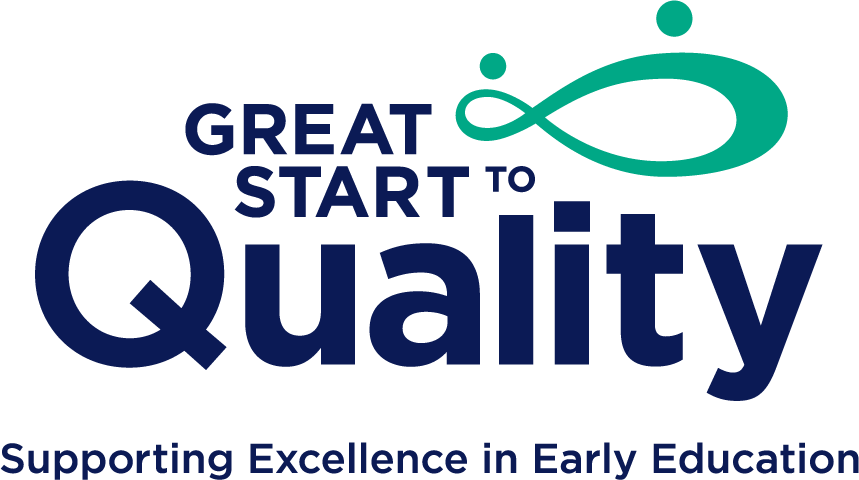
On-Site Observation
What it Means
Once a program’s Self-Reflection is validated, the program will receive an On-Site Observation using one of three tools approved for Great Start to Quality. A reliable Great Start to Quality Assessor, or external Approved Assessor, will visit the program and observe each age group.
Why it’s Important
When an Assessor from outside the child care program uses reliable and valid tools to observe program practices, it provides objective results that highlight strengths in program quality. It also gives the program a clear picture of areas in which to improve.
Observation Tools
In the Quality Improvement Process, three tools are used for On-Site Observation. In many cases, programs have a choice on which tool is used in their program’s On-Site Observation. In some cases, the program must use specific tools because of the ages served or specific program offering.
Environment Rating Scales (ERS-3)
Environment Rating Scales (ERS-3) measure process quality which is assessed primarily through observation and has been found to be more predictive of child outcomes. The scales also examine other less directly experienced quality which are more structural, such as staff supports, family participation and information, and interactions among adults. ERS is used across the country in Quality Improvement Systems like Great Start to Quality, and in all child care program types serving a variety of age groups.
Great Start to Quality uses these tools:
- Infant/Toddler Environment Rating Scale (ITERS-3)
- Early Childhood Environment Rating Scale (ECERS-3)
- Family Child Care Environment Rating Scale (FCCERS-3)
Classroom Assessment Scoring System (CLASS)
CLASS is a nationally recognized tool for measuring adult-child interactions. Children in classrooms with higher CLASS scores have been proven to have better social-emotional, cognitive, and academic outcomes. CLASS is also used across the country in Head Start programs, Quality Improvement Systems, and in all child care program types serving a variety of age groups. Learn more about why CLASS is a great tool for program quality improvement.
Great Start to Quality uses these tools:
- Infant CLASS
- Toddler CLASS
- PreK, K-3 CLASS
Social & Emotional Learning Program Quality Assessment (SEL PQA)
The SEL PQA gives Out-of-School Time (OST) staff the data needed to identify strengths and challenge areas and build safer, more supportive, interactive, and engaging environments for youth. Additionally, the tool measures the social and emotional support provided to youth.

Process
- A member of the Assessment Team will email you a form to complete to gather information, including which observation tool the program would like to use for the observation. Then the Assessment Team will contact the program to schedule a four (4) week window when an Assessor will visit to conduct the observation, and answer any questions. The program has the chance to give a small number of block out dates that may not be a typical day (e.g. field trip days).
- The Assessor assigned to the program calls at the beginning of the scheduling window to gather additional information including details of the daily schedule.
- The On-Site Observation is unannounced during the scheduled window of time. The goal is to complete the observation during a typical day at the program.
- After the On-Site Observation is complete, the program will receive the results from a Quality Improvement Coach from the local Great Start to Quality Resource Center.
- If the program meets or exceeds the threshold scores for every age group observed, it will achieve Demonstrating Quality.
Number of Observations
Home-based child care programs will receive one On-Site Observation using either the FCCERS-3 or the CLASS Toddler tool, which will encompass all age groups.
Centers serving infants, toddlers, preschoolers, and/or school-agers will receive observations based on the number of classrooms or groups in the program and the ages of children served. A minimum of one observation will be conducted for each age group served and additional observations will be randomly selected for groups as noted in the chart. The system chooses which classrooms or groups will be observed.
| Number of Classrooms or Groups | Number of Observations |
| 1 – 4 | 1 |
| 5 – 7 | 2 |
| 8 – 10 | 3 |
| 11 – 13 | 4 |
| 14 – 16 | 5 |
| 17 – 19 | 6 |
| 20 | 7 |
Examples
- There are four infant and five preschool classrooms for a total of nine classrooms; therefore, three observations will be scheduled. One per age group (1 infant room, 1 preschool room), and then the system will randomly select one more classroom from either age group.
- There are two infant rooms, two toddler rooms, two preschool rooms, and one schoolage room for a total of seven classrooms; four observations will be scheduled: One per age group (1 infant room, 1 toddler room, 1 preschool room, 1 schoolage room). No additional observations are needed as there are more than two observations being conducted due to four different age groups.
- There are six toddler rooms and six preschool rooms for a total of twelve classrooms; four observations will be scheduled. One per age group (1 toddler room, 1 preschool room) and then the system will randomly select two more classrooms from either age group.
If a program requests an Approved Assessor to complete only some of their classrooms, a GSQ Assessor will observe any remaining classrooms to fulfill the requirement for the number of observations. Learn more about Approved Assessors.
All classrooms observed must meet minimum threshold scores to move to the Demonstrating Quality level.
If you have questions about the number of observations the program needs, contact assessment@ecic4kids.org.
Threshold Scores
Threshold scores are the minimum scores a program must achieve for each observation conducted in their program.
Finding Observation Results
Once an On-Site Observation is complete, the Assessor prepares a written report that contains a program’s scores, areas of strength, and areas of opportunity for growth. Areas of strength are areas a program excelled in during the On-Site Observation. Areas of opportunity are where a program can make changes to build on what they are already doing. The written report contains suggestions for changes a program can make to improve in the areas of opportunity.

 Effective February 25, 2024, Michigan has removed the requirement to work with the Office of Child Support to receive help paying for child care. Check to see if you are now eligible!
Effective February 25, 2024, Michigan has removed the requirement to work with the Office of Child Support to receive help paying for child care. Check to see if you are now eligible!